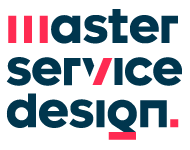Data is something that in their professional life designers deal with on different levels. Service designers are usually more familiar with firsthand and qualitative data, but dealing as well with quantitative data and visualizing it to properly communicate research findings and insights is a highly valuable skill. Moreover, data visualization is a design process itself that could involve both qualitative and quantitative data from different sources. When it comes to some of the core competencies of service designers, such as creating metaphors and storytelling, putting things into perspective, and empathizing with humans, dataviz becomes a powerful asset. Although it's not the focus of the final product, service designers can use data as the raw material to inform and direct the projects they're working on.
The ongoing pill, held by Elastic's Head of Data Visualization Giovanni Magni, is aimed at giving the students proper knowledge about data visualization and its principles, starting from the history of the discipline and getting into its evolution and current role in society. In this module, we'll try to answer questions such as why we do data visualization? What are the chart options for a specific issue? What kind of tools can we use to represent data and to communicate our findings? What are the questions that we should ask ourselves to create meaningful and helpful charts? The course will alternate theoretical and practical moments and will be divided into lessons and workshop activities where students will be assisted and will be given all the needed information to create a solid and insightful series of data visualizations.
While the lectures part will work both as an introduction to the discipline and a tutorial for tools and techniques, the most important part of the course will be the hands-on workshop. Students will be asked to design an analysis of data related to three different case studies, starting from hypothetical clients' needs and requests. They will have to face raw data, find stories in it and learn how to organize it to produce correct and reliable charts and diagrams.


